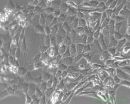(Press-News.org) For the first time scientists studying the cellular processes underlying the body's response to healing have revealed how a flash of calcium is the very first step in repairing damaged tissue. The findings, published in Current Biology, could lead to new therapies that speed up the healing process following injury or surgery.
Until recently, very little was known about how damaged tissue activates and attracts the first white blood cells to the wound — the first stage in the healing process. However, researchers from the University of Bristol's School of Biochemistry in collaboration with a team from the University of Bath, have shown that the very first trigger in this process is a flash of calcium which spreads like a wave back from the wound edge through gap junctions that connect all the cells.
This flash of calcium signal goes on to activate an enzyme known as DUOX that synthesises hydrogen peroxide, which, in turn, attracts the first white blood cells to the wound. This white blood cell invasion, which is initiated during our inflammatory responses, is needed to kill off invading microbes and stop the onset of septicaemia following tissue damage.
The findings indicate that the wound-induced calcium flash represents the earliest identified signal following wounding and might therefore orchestrate the rapid recruitment of immune cells.
To assess the impact of a reduced calcium flash upon the inflammatory response the team used Drosophila (fruit fly) embryos because they are translucent which makes it easy to image the inflammatory response and because of their simple genetics. The team found that blocking the calcium flash inhibited H2O2 release at the wound site leading to a reduction in the number of immune cells migrating to the wound.
Paul Martin, Professor of Cell Biology and an expert in wound healing at the University, said: "White blood cells are a little like 'Jeckyll and Hyde' in that they help us heal but are also the reason behind why we scar so we really need to know how they are regulated at wounds in order to learn how to control their behaviours for future therapeutic intervention."
Will Razzell, the lead PhD researcher on this study, added: "We are more than ever understanding the pathways that lead to immune cell attraction to wounds. As calcium represents the immediate inflammatory signal, we now have a good foundation to investigate this complicated process further."
### END
Scientists find calcium is the initial trigger in our immune response to healing
2013-02-14
ELSE PRESS RELEASES FROM THIS DATE:
Low-protein diet slows Alzheimer's in mice
2013-02-14
Mice with many of the pathologies of Alzheimer's Disease showed fewer signs of the disease when given a protein-restricted diet supplemented with specific amino acids every other week for four months.
Mice at advanced stages of the disease were put on the new diet. They showed improved cognitive abilities over their non-dieting peers when their memory was tested using mazes. In addition, fewer of their neurons contained abnormal levels of a damaged protein, called "tau," which accumulates in the brains of Alzheimer's patients.
Dietary protein is the major dietary regulator ...
The world's most sensitive plasmon resonance sensor inspired by ancient Roman cup
2013-02-14
Utilizing optical characteristics first demonstrated by the ancient Romans, researchers at the University of Illinois at Urbana-Champaign have created a novel, ultra-sensitive tool for chemical, DNA, and protein analysis.
"With this device, the nanoplasmonic spectroscopy sensing, for the first time, becomes colorimetric sensing, requiring only naked eyes or ordinary visible color photography," explained Logan Liu, an assistant professor of electrical and computer engineering and of bioengineering at Illinois. "It can be used for chemical imaging, biomolecular imaging, ...
Animal model of human evolution indicates thick hair mutation emerged 30,000 years ago
2013-02-14
The first animal model of recent human evolution reveals that a single mutation produced several traits common in East Asian peoples, from thicker hair to denser sweat glands, an international team of researchers report.
The team, led by researchers from Harvard Medical School, Harvard University, the Broad Institute of MIT and Harvard, Massachusetts General Hospital, Fudan University and University College London, also modeled the spread of the gene mutation across Asia and North America, concluding that it most likely arose about 30,000 years ago in what is today central ...
Maturitas publishes a clinical guide on lichen sclerosus
2013-02-14
Amsterdam, February 14, 2013 – Elsevier, a world-leading provider of scientific, technical and medical information products and services, announced today the publication of a clinical guide by the European Menopause and Andropause Society (EMAS) in its journal Maturitas on lichen sclerosus with summary recommendations.
Vulvar lichen sclerosus (LS) is a chronic inflammatory disease which affects genital labial, perineal and perianal areas, producing significant discomfort and psychological distress. The purpose of this clinical guide is to provide advice on early recognition ...
MOND used to predict key property in Andromeda's satellites
2013-02-14
CLEVELAND — Using modified laws of gravity, researchers from Case Western Reserve University and Weizmann Institute of Science closely predicted a key property measured in faint dwarf galaxies that are satellites of the nearby giant spiral galaxy Andromeda.
The predicted property in this study is the velocity dispersion, which is the average velocity of objects within a galaxy relative to each other. Astronomers can use velocity dispersion to determine the accelerations of objects within the galaxy and, roughly, the mass of a galaxy, and vice-versa.
To calculate the ...
Sewage lagoons remove most -- but not all -- pharmaceuticals
2013-02-14
CHAMPAIGN, lll. — 2012 marked the 40th anniversary of the Clean Water Act, which established regulations for the discharge of pollutants to waterways and supported the building of sewage treatment plants. Despite these advances, sewage remains a major source of pharmaceuticals and personal care products (PPCPs) and naturally occurring hormones found in the environment.
Many rural communities in the United States use aerated lagoon systems to treat their wastewater. The wastewater is pumped into at least one manmade aerated lagoon, in which oxygen-loving and anaerobic ...
Study: Behavioral therapy for children with autism can impact brain function
2013-02-14
Santa Barbara, Calif. –– Using functional magnetic resonance imaging (fMRI) for before-and-after analysis, a team of researchers including a UC Santa Barbara graduate student discovered positive changes in brain activity in children with autism who received a particular type of behavioral therapy.
Work completed at Yale University's Child Study Center used fMRI as the tool for measuring the impact of Pivotal Response Treatment (PRT) –– therapy pioneered at UCSB by Lynn Koegel, clinical director of the Koegel Autism Center –– on both lower- and higher-functioning children ...
Obesity coverage in black newspapers is mostly negative, MU study finds
2013-02-14
COLUMBIA, Mo. -- Obesity rates have increased dramatically in the last few decades. According to the U.S. Census Bureau, African Americans make up more than 60 percent of the overweight and obese population, while only 13 percent of the total population. A new study from the University of Missouri School of Journalism shows that American newspapers, and specifically newspapers geared toward an African-American audience, frame stories on obesity in a negative way. Hyunmin Lee, who performed her research while a doctoral student at MU, says this negative framing could have ...
Hopkins scientists create method to personalize chemotherapy drug selection
2013-02-14
In laboratory studies, scientists at the Johns Hopkins Kimmel Cancer Center have developed a way to personalize chemotherapy drug selection for cancer patients by using cell lines created from their own tumors.
If the technique is successful in further studies, it could replace current laboratory tests to optimize drug selection that have proven technically challenging, of limited use, and slow, the researchers say.
Oncologists typically choose anticancer drugs based on the affected organs' location and/or the appearance and activity of cancer cells when viewed under ...
Are billboards driving us to distraction?
2013-02-14
There's a billboard up ahead, a roadside sign full of language and imagery. Next stop: the emotionally distracted zone.
One University of Alberta researcher has discovered that language used on billboards can provoke an emotional response that affects our driving abilities. And whether the words have a negative or positive connotation seems to determine whether the attention wanders or the foot gets heavier.
Lead study author Michelle Chan says that although plenty of literature exists on road rage, none of it deals with external emotional stimuli. Chan and her U of ...


